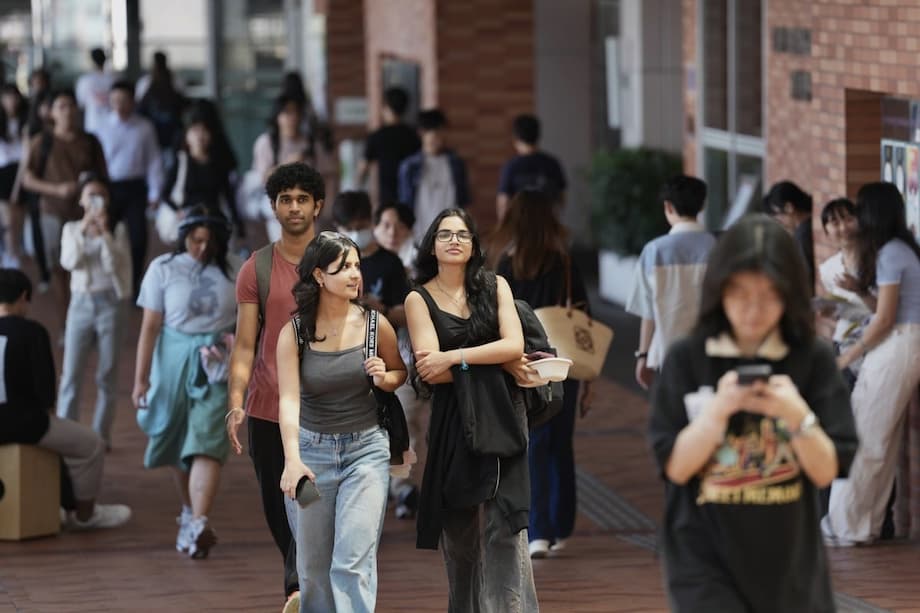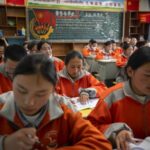Why the quota is rising now
Chief Executive John Lee Ka chiu’s latest policy plan will raise the ceiling on non local undergraduate intake at public universities to a ratio equivalent to 50 percent of local students starting in the 2026 to 27 academic year. The change follows a rapid lift from a 20 percent ratio to 40 percent in 2024. Officials frame the move as a cornerstone of a broader push to build an international education hub and to attract global and mainland talent across science, business and the arts. Government statements stress that the 15,000 publicly funded undergraduate places reserved for local students will not be reduced, and that institutions must scale capacity in step with demand. Admission caps are set by the University Grants Committee, which funds the eight public universities. The cap applies to non local undergraduate students who do not hold the right of abode in Hong Kong. The new ratio allows a university that enrolls 10,000 local undergraduates to admit up to 5,000 non locals on top of that local number, subject to resources.
Support for the direction is strong among university leaders, who argue that a broader student mix deepens the learning environment and supports research pipelines. Yet education policy scholar Joshua Mok Ka ho, provost and vice president at Hang Seng University of Hong Kong, has urged a gradual increase rather than a sharp jump. He points to a looming bottleneck in hostel capacity and high private rents that could erode the learning experience for non local students. Mok also argues that the city will only become a true education hub if it can draw top scholars and offer them a competitive package, including realistic housing options.
The government has begun to respond on housing and capacity. It has launched a scheme that lets universities and partners convert suitable commercial buildings into student residences, and widened the scope to include projects that redevelop original commercial sites as new hostels. In a separate pledge, projects already in the pipeline would add about 13,500 hostel places by 2027 to meet demand from a larger intake of students according to the 2023 policy address. Universities say they will align admission plans with their real capacity.
Another piece in the policy mix is work and retention. Rules that restricted international students to a limited amount of part time work have been relaxed. Undergraduate and postgraduate students who are not local can now work part time without a set hourly cap during their studies after receiving a No Objection Letter from the Immigration Department. The aim is to sharpen career exposure, make the city more attractive to applicants and increase the chance that graduates stay on to fill skills gaps.
How the cap works and who counts as non local
In Hong Kong, the term non local refers to students who do not hold the right of abode or right to land. They include applicants from mainland China and from overseas. The statutory cap applies to full time undergraduate places at public universities that receive funding from the University Grants Committee. The formula is a ratio of non local to local students, rather than a percentage of total headcount. A cap set at 50 percent of local numbers, as proposed, means non local enrolment can reach half the local intake if resources permit.
The cap does not cover all study levels. Taught postgraduate programmes such as one year masters are usually self financing and have no government cap on non local numbers. Research postgraduate programmes are funded but institutions may enroll above their funded targets within an over enrolment ceiling. That ceiling for self financing places in funded research postgraduate programmes is being raised from 100 percent to 120 percent to give departments more room to recruit strong candidates.
Will local students lose places?
Officials have repeated that the 15,000 publicly funded undergraduate places for local students will stay unchanged. Those places are allocated each year through the University Grants Committee and filled largely through the citywide admissions system for locals. A higher cap for non locals does not reduce the count of funded places for locals. It does, however, change the composition of classes in popular majors and may increase competition for scarce resources such as first year dorm beds, laboratory time and academic advising slots. Universities say they will scale facilities and staffing to match.
Housing and rental pressure, the key bottleneck
Accommodation is where stress is already visible. The surge in applications from non local students during the past year has been strong, with a large share from mainland China. At the University of Hong Kong, non local undergraduate applications hit a record of more than 25,000, including around 21,000 from the mainland, according to university figures. In the first quarter of 2025, approvals for mainland students to study in the city rose to about 8,000, up from roughly 3,000 a year earlier. Rents near major campuses climbed by up to 12 percent in some neighborhoods as demand outpaced the supply of student beds. Demand is particularly strong for taught masters programmes, which sit outside the non local cap.
New beds take time to build, and land next to most campuses is scarce and expensive. To close the gap, the government created a pilot scheme to convert appropriate hotels and commercial buildings into student residences. Universities and private operators have moved to acquire or repurpose assets at lower prices in a slow tourism market. The approach adds capacity quickly, but student groups and housing advocates caution that conversions can reduce communal spaces and weaken pastoral care if not designed well.
Alongside conversions, universities are expanding into satellite locations for teaching and study space. Some institutions are making use of larger campuses across the border in mainland China for specific programmes and shared research. That integration can relieve space constraints in the short run, although most undergraduates still expect a campus based experience in Hong Kong for the bulk of their studies.
What universities are doing
University leaders broadly welcomed a larger non local intake and said they would align facilities with the change. The Chinese University of Hong Kong rolled out university endorsed off campus accommodation this academic year to add capacity beyond its own halls. Lingnan University said it is investing in new hardware and learning facilities. City University said it will ensure dormitories and classrooms can cope with higher numbers. The government has pledged to reserve additional sites for university hostels to support these plans.
Private institutions have voiced caution. Hang Seng University said the step to a 50 percent ratio for self financing non local undergraduates would be too large if applied all at once. Its leadership called for a thorough study of each institutions capacity and for stronger student support measures before the change takes effect citywide. Several academics echo that a step by step approach would lift social acceptance and give services time to expand.
The talent race, scholarships and faculty recruitment
The quota change comes amid a wider talent push. The administration has set a goal to develop Hong Kong into an international centre for innovation and technology and a post secondary education hub that nurtures talent. Looser caps give universities more room to admit high achieving applicants in fields where global competition is intense, from computer science and engineering to finance and the creative arts.
Scholarship money is also being increased. The 2023 policy address set out a plan to inject 1 billion Hong Kong dollars into the Government Scholarship Fund. The quota for the Belt and Road Scholarship would rise by about half, and the Hong Kong PhD Fellowship Scheme would expand gradually from 300 to 400 awards per year. These changes aim to attract outstanding students to study and conduct research in the city and to diversify source regions.
Attracting top faculty remains crucial. After a period when some academics and students moved abroad, universities are working to refresh departments and open new labs and centres in priority areas. Pay, research funding and housing all matter in that competition. Education leaders such as Joshua Mok argue that easing the pressure of high private rents and increasing high quality housing near campuses will make recruitment more effective.
Work rules and retention
Work rights are another lever. International students can now take part time jobs without a fixed hourly limit during term time. The Immigration Department issues the required No Objection Letter directly through universities, replacing the older process that required case by case approval. Around 20,000 undergraduates are expected to benefit. The goal is to give non local students more exposure to the local job market, to reduce friction for employers and to encourage graduates to remain in Hong Kong after finishing their degrees. The statutory minimum wage is currently 40 Hong Kong dollars per hour, a benchmark that applies to student workers unless specific exemptions are in place.
If handled well, the change can deepen industry links and ease skills shortages in entry level roles. There are also risks. Universities and employers will need to watch for overwork during peak academic periods and make sure international students understand their rights at work. Clear guidance and simple reporting channels for problems can prevent abuse.
Integration and campus life
Bringing in more non local students only strengthens the sector if those students thrive. Research on community college cohorts in Hong Kong has found that non local learners often face a mix of language challenges, policy rigidity and weaker family support. Local students tend to have a smoother path because of fluency in Cantonese and English and familiarity with the schooling system. Non local students can struggle in both languages, and many are far from home without the same social safety net.
The same research highlights targeted steps that work. Institutions can offer stronger Cantonese and academic English support, along with peer mentoring and cohort based advising. More flexible credit transfer and admissions rules reduce barriers for students who change programmes. Social integration matters as much as grades. Purposeful mixed housing, student societies that bridge backgrounds and inclusive teaching practices all contribute to a sense of belonging.
Universities have started to scale these supports, but demand will grow if non local numbers rise toward the new ceiling. Hiring additional student counsellors, language teachers and career advisers, and building more quiet study and community spaces, can make a material difference for both local and non local cohorts.
Why gradual growth may help
A steady ramp gives time for these support systems to catch up. It allows new hostel beds to come online and for converted properties to be tested and improved. It gives the rental market space to adjust rather than spike, and avoids a sudden squeeze on library seats, laboratories and student services. It also helps the wider community adjust to a more international student presence through outreach and clear communication.
The numbers behind the push
The demand picture helps explain the governments move. Applications from outside Hong Kong, especially from the mainland, have accelerated. University leaders report historic interest in popular programmes at the University of Hong Kong, Chinese University and others. Approval data for study visas from the start of 2025 show a sharp uptick. This sits alongside a local demographic trend of smaller youth cohorts and a policy aim to draw talent that can support long run growth sectors.
The private sector has grown quickly as well. Hong Kong now has several degree granting private universities, and self financed enrolments have risen sharply inside the eight public universities. University annual reports indicate that the proportion of students in programmes funded by the University Grants Committee fell to roughly 61 percent in 2023 to 24, down from about two thirds five years earlier. That means tens of thousands of students are now studying on self financed tracks that sit outside the main funding envelope.
Universities are also using the property cycle to acquire teaching space and revitalise older buildings. Some are piloting new centres away from their main campuses. Others are expanding collaboration with sister campuses in mainland cities. These approaches diversify options, although they do not remove the need for more hostel beds in Hong Kong itself.
Risks to watch
Rapid growth can carry side effects if not managed well. A single intake cycle where non local demand surges could drive rents up around universities, squeezing local tenants and lower income families. Balancing student housing with community housing must remain a priority.
Academic quality is another pressure point. Departments need time to recruit faculty, lab technicians and teaching assistants in step with rising enrolments. Quality assurance must keep pace as new programmes open in response to demand. A healthy spread of source regions also matters. If the mix tilts too heavily to one source, campus networks can fragment and language barriers can grow.
Student wellbeing deserves attention as more students live in converted hotels or commercial buildings. Design standards that require common rooms, study areas, kitchens and accessible counselling services can reduce isolation. Transport links and security also matter for late evening commutes from off campus housing.
What happens next
The new cap is set to apply from the 2026 to 27 academic year. In the coming months, institutions are likely to audit programme capacity, dorm beds and staffing, then phase in higher offers where they can maintain standards. The government has signalled it will continue to fast track hostel projects, reserve sites for future halls and streamline approvals for suitable conversions.
Families and applicants can expect more competition for accommodation and for places in popular majors, although the count of funded places for locals remains unchanged. Local students will continue to apply through the core admissions system, while non local applicants apply directly to universities. Clear data on non local numbers by programme, regular updates on hostel pipelines and wider community engagement will help the policy bed in smoothly.
Key Points
- Hong Kong plans to raise the non local undergraduate intake cap at public universities to a ratio of 50 percent of local students starting in 2026 to 27.
- Officials say the 15,000 publicly funded undergraduate places for local students will not be reduced.
- Education scholar Joshua Mok Ka ho urges a gradual intake to avoid hostel shortages, rent spikes and social friction.
- The government is expanding hostel supply through new builds and by converting suitable hotels and commercial buildings.
- International students can now work part time without a fixed hourly limit during studies, with a streamlined No Objection Letter process.
- Scholarship funding is increasing, including a larger Belt and Road Scholarship and more Hong Kong PhD Fellowships.
- Universities report strong growth in non local applications, with a large share from mainland China, and rents near campuses have risen.
- Masters programmes are not subject to the non local cap, and research postgraduate over enrolment thresholds are being widened.
- Private universities and self financed enrolments are growing, increasing total student numbers outside the main funding envelope.
- Key risks include housing pressure, academic staffing needs and the need for stronger integration and language support.












